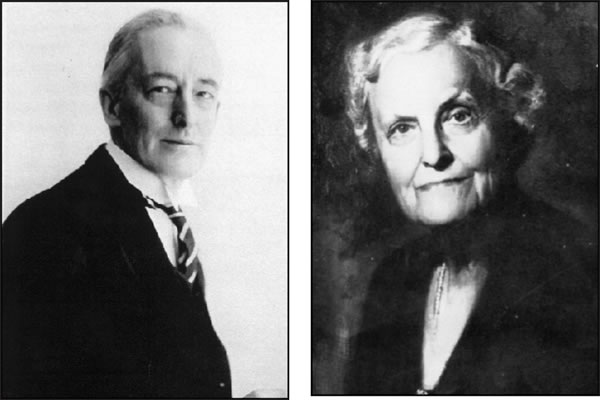By Albert Amateau
The Villager began 75 years ago on April 13, 1933, four years after Wall St. crashed and a few years into the Great Depression.
Through the lean years and the New Deal, through the years of World War II, the weekly newspaper chronicled the struggle to save The Village and Washington Square Park.
The rise of political reform, the preservation of the Jefferson Market Court House, the dawning of gay and lesbian consciousness, the transformation of the waterfront, the epoch changing terror of Sept, 11, 2001 — all have been in the pages of The Villager from a neighborhood point of view.
The Villager changed along with the times, often a step ahead and occasionally a step behind.
The first front page had a drawing from 1916 “Bruno’s Garret — Which is no More,” a two-story rooming house on a West Village corner. Nostalgia was a given for The Villager’s founders, Walter Gregory Bryan and his sister, Isabel Bryan.
Walter Bryan, who started his newspaper career in 1883 as a carrier boy for the Fulton, Mo., Sun, went on to work as a reporter for the Kansas City Times, served as business manager of the St. Louis Star and then promotion director of the Chicago Tribune. He organized The Bryan Organization, a newspaper marketing firm in 1912 and at the same time joined the Hearst Organization as publisher of the Atlanta Georgian and then the New York American.
Walter was a joiner and an organizer — a Mason, a Shriner, a member of the Sons of the American Revolution, the American Order of Pioneers and an organizer and associate director of the New York State Boone Family Association — who traced their ancestry to Daniel Boone.
His sister, Isabel, was a publicity and advertising manager for several companies. After a stint as head of the English department at William Woods College in Fulton, Mo., she eventually became the office manager for the Bryan Organization. She was known as one of the best woman copy editors of her day.
The lead article on the paper’s first front page was about the annual meeting of the Washington Square Association in the Fifth Ave. Hotel. Two items noted the legalization of 3.2 beer, the first crack in Prohibition: Peter Gilmore celebrated the opening of his play in the Cherry Lane Theater with a beer party during intermission; “Hoppy News” was a headline on The Villager’s editorial page.
Another item said the night court session of the Jefferson Market Court House disappointed spectators who expected to be entertained by a parade of beer drunks: “For the first time in months only six cases were taken to hospitals for over-indulgence and these were found to be suffering from ‘smoke’ or third-rail whiskey” — whatever that is.
Also in the debut edition, a short circuit under the seats damaged a southbound streetcar on Sixth Ave. at Waverly Pl. but the 30 passengers boarded the next car without delay. A street car on the Eighth St. cross-town line collided with a cab at Christopher and West Sts. but no injuries were mentioned. Two New York University undergraduate magazines suspended publication “because of recent financial difficulties.”
A year later, Walter wrote that the paper was intended to catch the voice and the spirit of the Village. He implied that the paper was responsible for people recognizing the Village as “a community of both color and conservatism … of substance and charm, happy home life … high educational, artistic and musical standards … of alert business development, in short, an unusually desirable section in which to study, play, live and make a living.”
Governor Herbert Lehman, former Governor Alfred E. Smith and Greenwich House founder and director Mary K. Simkhovitch were among those who sent anniversary greetings.
Walter died in 1941 and Isabel carried on until her death in 1957. Her sister, Merle Bryan Williamson, took over at the age of 83.
William Honan, a former New York Times reporter and New Yorker writer, was on The Villager staff from 1957 until 1960. In an interview a few years ago, Honan recalled Merle Williamson as a gallant woman who knew nothing about newspapers.
“She ran a Holiday Inn in Missouri and became The Villager publisher on sheer courage,” he said.
Up to that time, The Villager took the political path of least resistance and supported the powers that were — namely the Tamawa Democratic Club and its leader Carmine DeSapio, said Honan.
But in 1959, Honan convinced Jim Bledsoe, the assistant publisher, to back the reformers, including Mayor Robert Wagner, ex-Governor Lehman and ex-Governor W. Averill Harriman, and oppose DeSapio, Tammany Hall’s reigning chief and the Village’s Democratic district leader.
“We went to Merle and told her what we wanted to do,” Honan said. “She was 85 years old but she was from Missouri where the Prendergast machine ran Kansas City. She said, ‘Well boys, you better do it right. If you don’t, you’ll be stretched out in a church and people will be saying how natural you look.’ If her sister were still running the paper, it would never have happened,” Honan said.
After Merle died in 1961, her son, Bill Williamson, took over and Jim Bledsoe remained assistant publisher for several years.
In the 1970s, the finances of The Villager were uncertain, and various investors — “angels” is a better word to describe them — helped the paper survive. Bill Bowser, a West Village activist who died seven years ago, wrote for the paper about Village history and neighborhood news under three bylines: William Bowser, William Patton and David Linder.
Royce Rowe, who worked for ABC News, took the helm of a foundering ship in 1973, according to Miriam Bockman, a former Village resident and Greenwich Village Democratic district leader.
“I came to help Royce out a couple days a week, but there were so few of us and so much to do that it became full time,” Bockman said in an interview five years ago. “We were on University Pl. in the Albert Hotel building. It was picturesque but the place was terrible. The roach problem was significant. If Scoopy the cat were still around then he would have had a field day eating insects.”
Rowe’s partner in The Villager was Martin Shaer, who owned real estate on Grove and Hudson Sts., according to Robert S. Trentlyon, the publisher at that time of the Chelsea Clinton News and The Westsider. Trentlyon acquired The Villager and ran it for a year or two between the reigns of Rowe and Shaer.
Michael Armstrong, publisher of the Brooklyn Phoenix, came into the picture next.
“I bought it in 1977 from Royce Rowe,” said Armstrong. “It had about five owners in the 1970s before I came in,” he said in a 2003 interview.
Under Armstrong’s tenure, The Villager editorial office moved several times before settling in the East Village. In those days the Villager gave Off-Off Broadway theater awards, arts coverage was The Villager hallmark and the East Village was the cultural center of the readership.
“We moved from 13th St. just off Fifth Ave. to Seventh Avenue South above Sweet Basil’s, which had been the old Tamawa Democratic Club,” Armstrong recalled. “Then we moved to E. Fourth St. near LaMaMa’s theater.”
But in January 1992, the economic climate was too tough and Armstrong closed the paper.
Nevertheless, six months later, Tom Butson, a retired New York Times assistant news editor, and his wife, Elizabeth Margaritis Butson, a former marketing vice president at Philip Morris, bought the paper and resumed publishing, saving it from vanishing from existence.
In the next seven years, the Butsons transformed a moribund paper into a
thriving community weekly, Tom Butson as editor and Elizabeth Butson as publisher.
At age 19, Tom Butson had left his native New Zealand, where he was working as a reporter for The Truth, a weekly paper he later described as “a political scandal sheet.” He looked for newspaper work in London but learned that the Thompson papers in Canada were hiring, so there he went to work for the Thompson paper in Guelph, Ontario. By the time he was 28 he was assistant managing editor of the Toronto Star.
He ran photos by Elizabeth Margaritis — who was at the time was working as a photojournalist — in the paper, and they married in 1967. He joined the Times in 1968, working on the Week in Review section of the Sunday paper and as assistant news editor of the daily main news section. Three years after purchasing The Villager, the Butsons acquired a second local paper, Downtown Express, covering Tribeca and Lower Manhattan.
Tom Butson’s declining health prompted the sale in 1999 of The Villager and Downtown Express, the latter at the time a biweekly, to John W. Sutter, who had recently sold a chain of Long Island newspapers he had been running for 10 years. In 1995 Sutter had moved to Tribeca.
The Villager’s Sept. 11, 2001, issue was a few days late, but its coverage of the World Trade Center attack and the impact on the community was complete. In 2002, The Villager won 13 editorial awards for 2001 from the New York Press Association, including seven first-place prizes, as well as the Stuart Dorman Award for Editorial Excellence, the association’s top prize honoring the state’s best community weekly paper. The Villager also won the Dorman Award in 2004 and 2005.
To provide critical coverage to Lower Manhattan, Downtown Express became a weekly newspaper soon after the World Trade Center attack, and in mid-2002, Sutter acquired LGNY, a biweekly newspaper covering the gay community, relaunching it as the weekly Gay City News. In mid-2005, Sutter started NYC Plus — since renamed Thrive NYC — a monthly publication targeting an over-age-50 readership. In late 2006, Sutter started another weekly paper, Chelsea Now, covering the thriving Chelsea area.
All four weekly newspapers continue to win awards at the annual N.Y.P.A. spring convention. In April this year, The Villager took home three first-place awards, for coverage of business, financial and economic news; best obituaries; and the “Picture Story” photography category, as well as five other awards in editorial categories.


















